In the 1st figure shown here rod is massless and at its end a bob of mass m is attached. The other figure is a uniform rod also of mass m. As they are released, at the bottom

The bob has higher kinetic energy but lower angular velocity
The bob has higher kinetic energy as well higher angular velocity.
The bob has lower kinetic energy but higher angular velocity.
The bob has lower kinetic energy as welll as lower angular velocity
The correct Answer is:A
for bob mgl=12ml2ω2
ω=√2gl
for rod mgl2=12ml2ω23,
ω=√3gl
applying WET wg=kf−kj
for bob mgl=k
for rod mgl2=k
Topper's Solved these Questions
- TEST PAPERSBook:BANSALChapter:TEST PAPERSExercise:PHYSICS PART (A)
Explore 32 Videos
- TEST PAPERSBook:BANSALChapter:TEST PAPERSExercise:PHYSICS PART (B)
Explore 3 Videos
- TEST PAPERSBook:BANSALChapter:TEST PAPERSExercise:PHYSICS PART- C
Explore 4 Videos
- SEMICONDUCTORSBook:BANSALChapter:SEMICONDUCTORSExercise:CBSE Question
Explore 32 Videos
Similar Questions
(a) In the system shown in figure 1, the uniform rod of length L and mass m is free to rotate in vertical plane about point O. The string an pulley are mass less. The block has mass equal to that of the rod. Find the acceleration of the block immediately after the system is released with rod in horizontal position.
(b) System shown in figure 2 is similar to that in figure 1 apart from the fact that rod is mass less and a block of mass m is attached to the centre of the rod with the help of a thread. Find the acceleration of both the blocks immediately after the system is released with rod in horizontal position.

View SolutionAs shown in the figure, a bob of mass m is tied by a massless string whose other end is wound on a fly wheel Ring of radius r and mass m. When released from rest the bob starts falling vertically. When it has covered a distance of h, the speed of the bob will be :
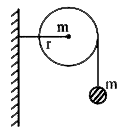
View Solution
Knowledge Check
An impulse I is applied at the end of a uniform rod if mass m. Then:
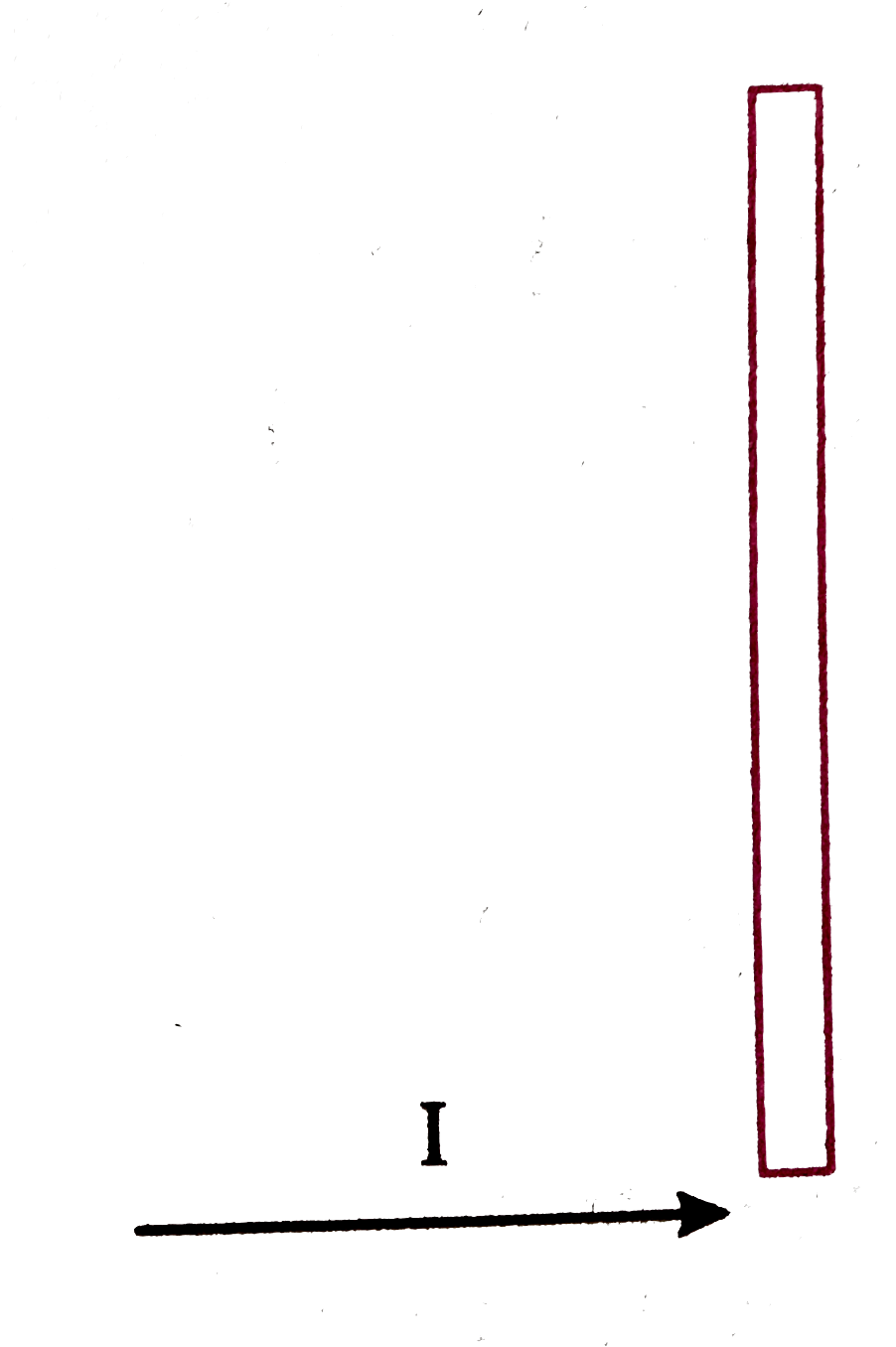 AKE of translation of the rod is I22mBKE of rotation of the rod is I26mCKE of rotation of the rod is 3I22mDKE of the rod is 2I2m
AKE of translation of the rod is I22mBKE of rotation of the rod is I26mCKE of rotation of the rod is 3I22mDKE of the rod is 2I2mIn the figure shown, the cart of mass 6m is initially at rest. A particle of mass m is attached to the end of the light rod which can rotate freely about A. If the rod is released from rest in a horizontal position shown, determine the velocity vrel of the particle with respect to the cart when the rod is vertical. (Assume frictionless surface)
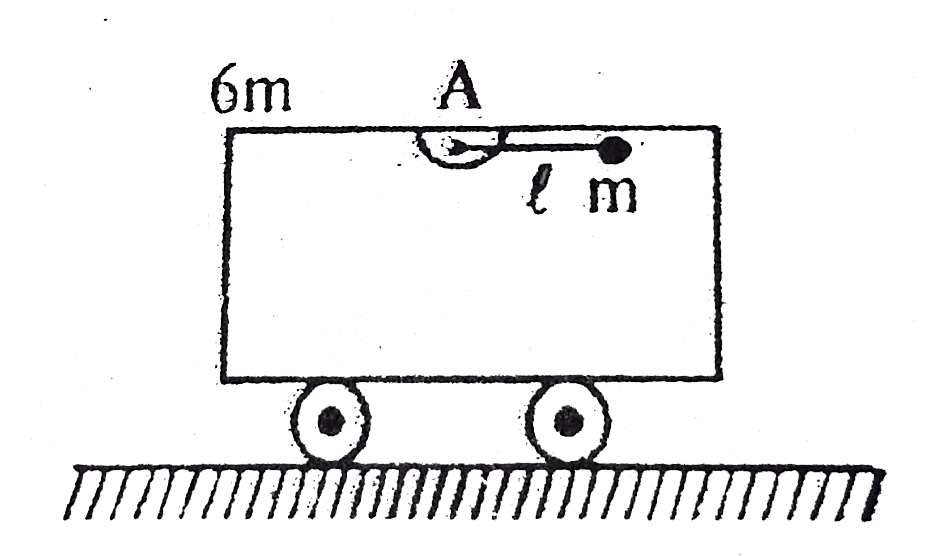 A√73glB√76glC√143glD√83gl
A√73glB√76glC√143glD√83glIn the figure shown, the cart of mass 6m is initially at rest. A particle of mass in is attached to the end of the light rod which can rotate freely about A. If the rod is released from rest in a horizontal position shown, determine the velocity vrel of the particle with respect to the cart when the rod is vertical.
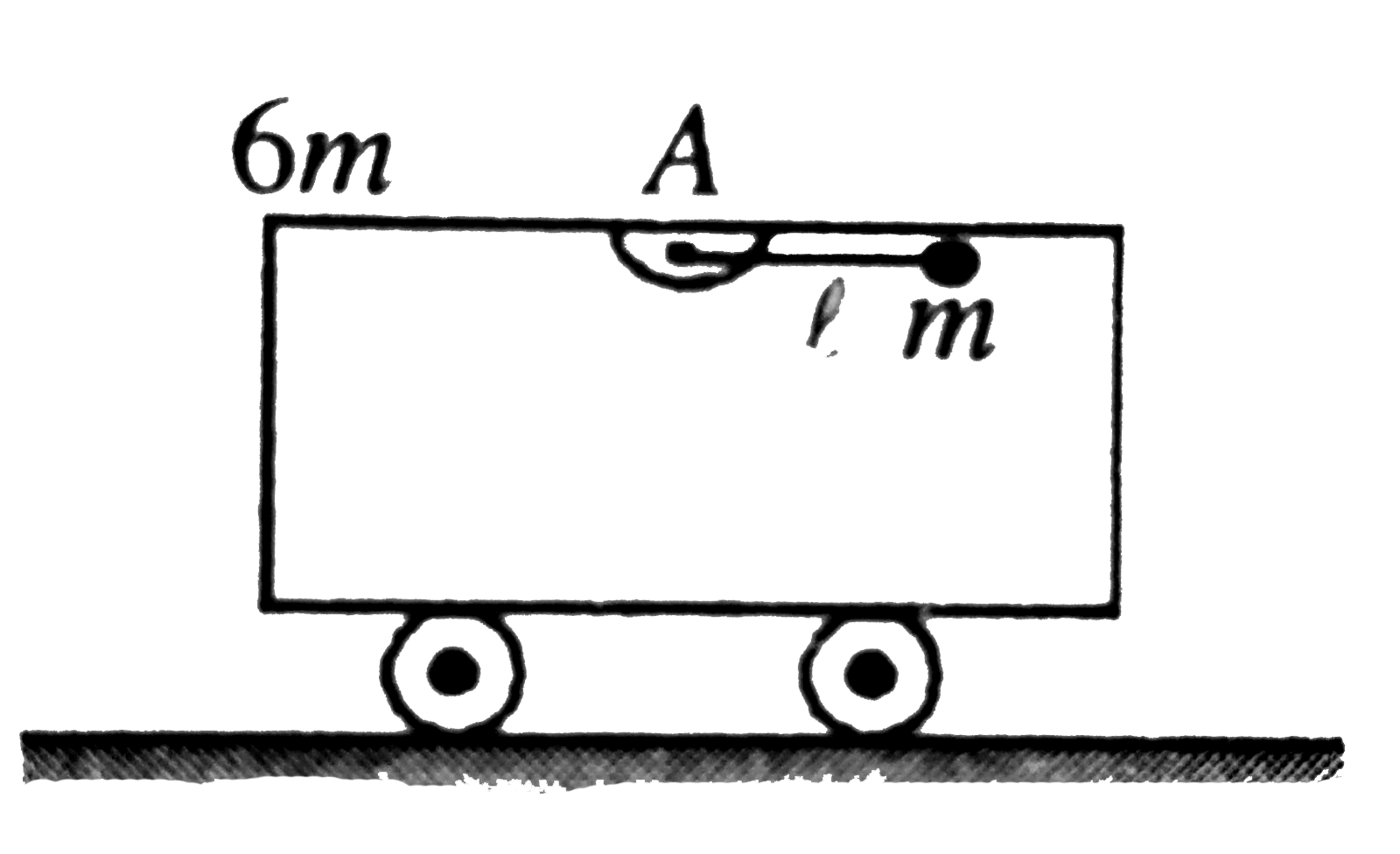 A√143glB√76glC√73glD√83gl
A√143glB√76glC√73glD√83gl
Two point masses of mass m and equal and opposite charge of magnitude q are attached on the corners of a non-conducting uniform rod of mass m and the system is released from rest in uniform electric field E as shown in figure from θ=53∘
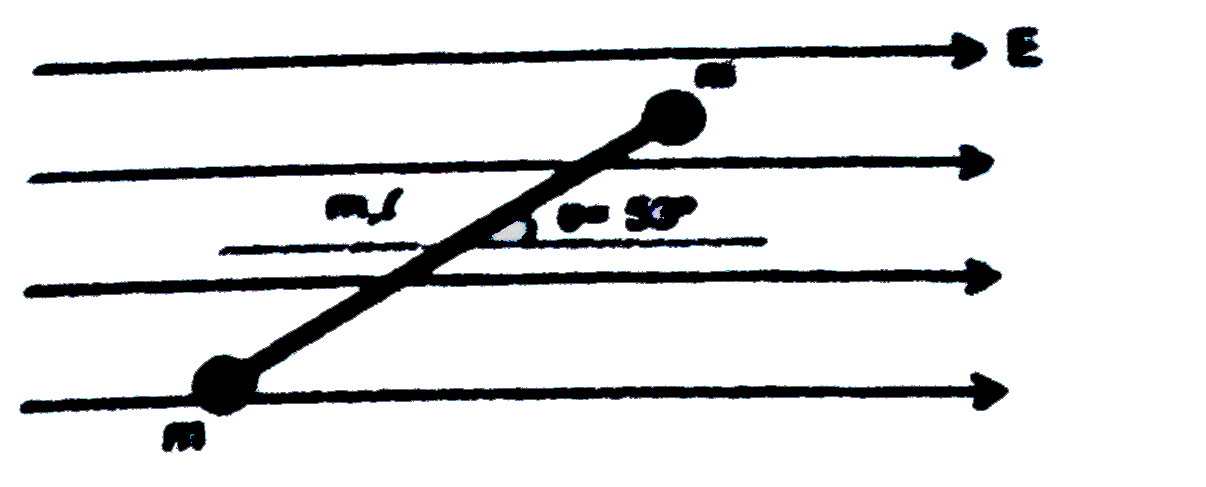
(i) Find angular acceleration of the rod just after releasing
(ii) What will be angular velocity of the rod when it passes through stable equilibrium.
(iii) Find work required to rotate the system by 180∘.
View Solution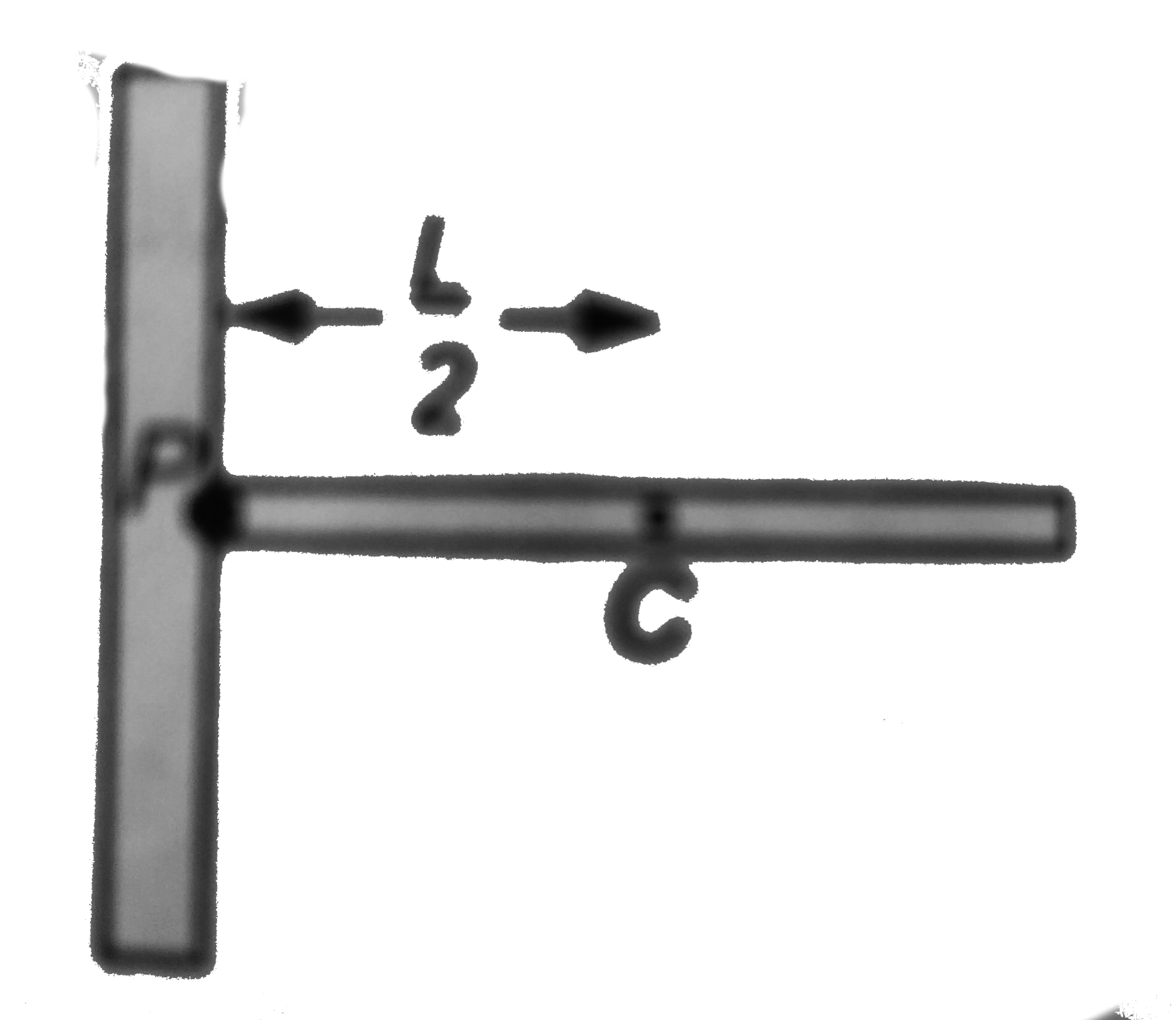
A uniform rod of length L and mass m is free to rotate about a frictionless pivot at one end as shown in figure. The rod is held at rest in the horizontal position and a coin of mass m is placed at the free end. Now the rod is released The reaction on the coin immediately after the rod starts falling is
View SolutionA uniform cubical block of mass M is attached to a pulley. One end of a string, passing over the pulley is fixed to a light pole while is fixed on the bigger block and its another end is attached to a block of mass m as shown in figure. The maximum value of the mass m so that the block does not topple is : (string and pulley are ideal)
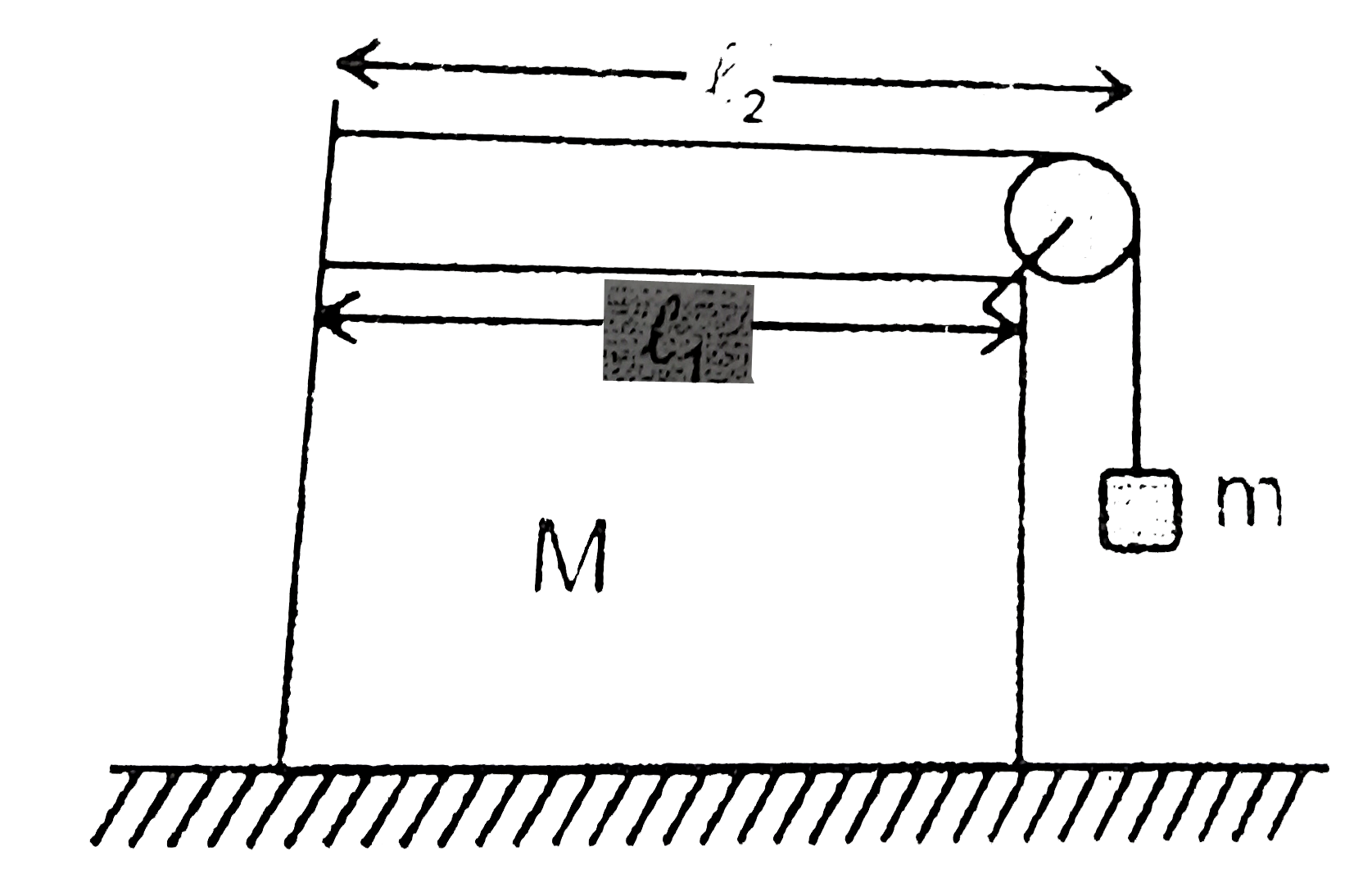
View SolutionA uniform thin rod of length 1m and mass 3 kg is attached to a uniform thin circular disc ois
View SolutionIn space of horizontal EF(E=(mg)/q) exist as shown in figure and a mass m is released at the end of a light rod. If mass m is releases from the position shown in figure find the angular velocity of the rod when it passes through the bottom most position
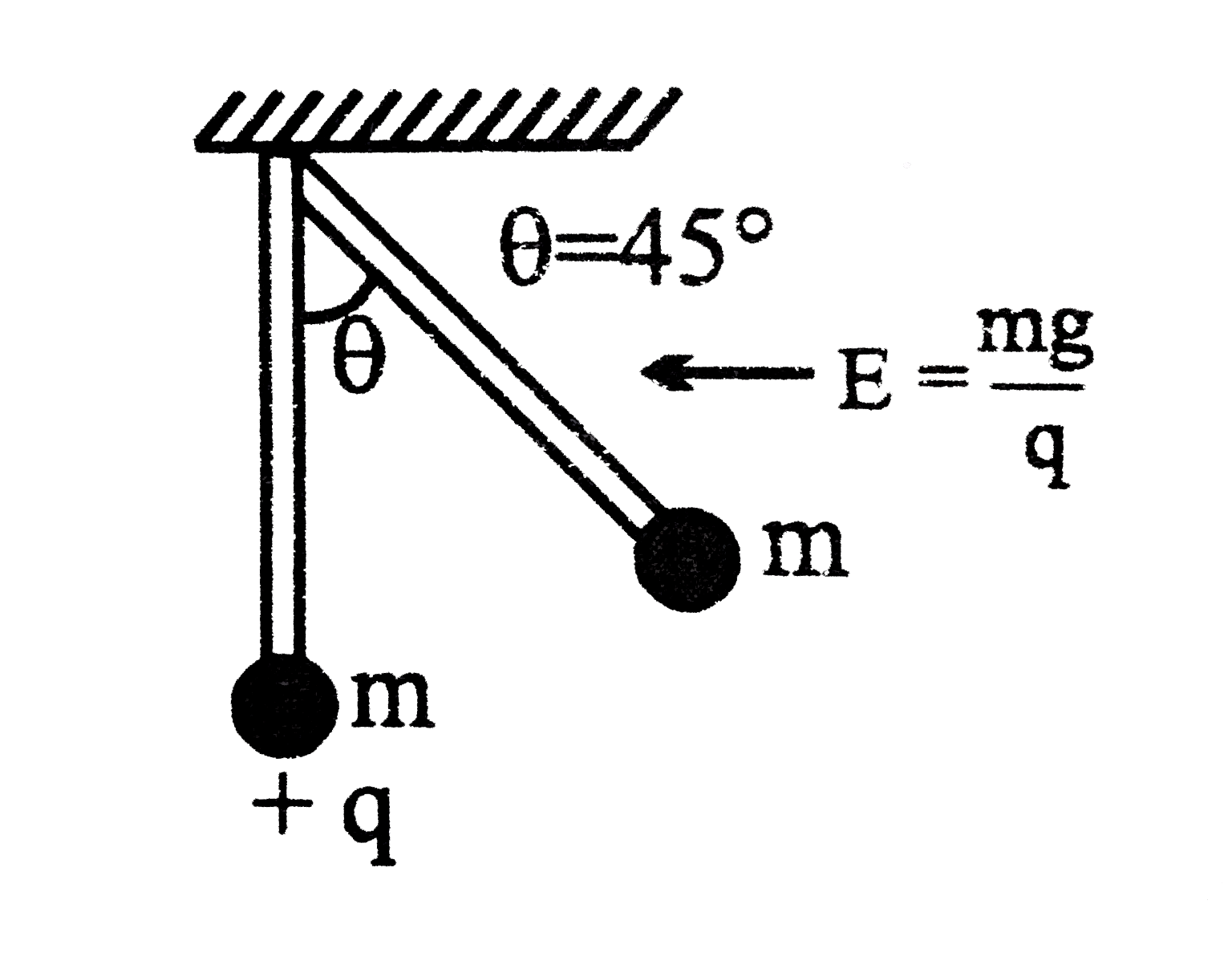 .
.
View Solution

